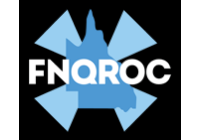Douglas (S)
About the profile areas
The 2023 Estimated Resident Population for Douglas (S) is 12,828, with a population density of 5.27 persons per square km.
Location and boundaries
Douglas Shire is located in Far North Queensland, about 1,800 kilometres north of the Brisbane CBD, and 400 kilometres north of the Townsville CBD. Douglas Shire is bounded by Cook Shire and Wujal Wujal Aboriginal Shire in the north, the Coral Sea in the east, the Cairns Regional Council area in the south, and Mareeba Shire in the west.
Traditional Owners
The original inhabitants of Douglas Shire were the Kuku Yulanji and the Tjapukai Aboriginal people.
Name origin
Douglas Shire is named after John Douglas, former Premier of Queensland.
Important
|
Population12,828 2023 ABS ERP |
Land area2,435 square km |
Population density5.27 persons per square km |
Settlement history
European settlement dates from 1877 when the townships of Mossman and Port Douglas were established as shipping ports for the nearby goldfields. The main industries to develop were gold mining, timber getting and sugar cane production. Expansion continued during the early 1900s, with a population of about 1,400 in 1911, rising to about 2,900 in 1933. Significant development did not occur until the post-war years, with the population increasing to about 4,000 in 1966. Rapid growth took place during the late 1970s and 1980s mainly in the urban areas of Mossman and Port Douglas, aided by tourism. The population of the Shire rose to nearly 5,000 in 1976, and then to about 8,000 in 1986. The population continued to increase, rising to about 12,000 in 1991, and then to nearly 18,000 in 2016. Growth from the 1990s has been mainly in the coastal towns of Cooya Beach, Cow Bay, Craiglie, Newell and Oak Beach.
Land use
Douglas Shire includes significant areas of national park, rural areas and growing urban areas. The Shire encompasses a total land area of about 2,400 square kilometres. The main townships are Mossman and Port Douglas, with smaller townships at Cooya Beach, Newell and Wonga. Urban areas include residential, commercial, tourist and industrial land uses. Rural land is used predominantly for sugar cane farming, with some cattle grazing and tropical fruit growing.
Transport
Douglas Shire is served by the Captain Cook Highway.
Major features
- Major features of Douglas Shire include Daintree National Park,
- Wet Tropics World Heritage Area,
- Cape Tribulation,
- Mossman Gorge,
- The Coral Sea,
- The Great Barrier Reef,
- Low Isles,
- Mossman Central Mill,
- Cape Tribulation Exotic Fruit Farm,
- Daintree Discovery Centre,
- The Mossman Gorge Centre,
- Daintree Entomological Museum,
- The Bat House,
- Daintree Rainforest,
- Daintree River Cruise Centre,
- Daintree River Ferry,
- Hartley’s Crocodile Adventures,
- Karnak Playhouse & Rainforest Sanctuary,
- The Wildlife Habitat Port Douglas,
- Mossman Town & Country Shopping Centre,
- Daintree Village,
- Cow Bay Primary Health Centre,
- Mirage Country Club,
- Palmer Sea Reef Golf Course,
- Bally Hooley Steam Railway,
- Mossman Showgrounds,
- The Bloomfield Track,
- The Daintree River,
- Cooya Beach,
- Four Mile Beach,
- Newell Beach,
- Oak Beach,
- Thornton Beach and Wonga Beach.
Included areas
- Douglas Shire includes the suburbs and localities of Bamboo,
- Bloomfield (part),
- Bonnie Doon,
- Cape Tribulation,
- Cassowary,
- Cooya Beach,
- Cow Bay,
- Craiglie,
- Dagmar,
- Daintree,
- Dedin,
- Degarra,
- Diwan,
- Finlay Vale,
- Forest Creek,
- Killaloe,
- Kimberley,
- Lower Daintree,
- Low Isles,
- Miallo,
- Mossman,
- Mossman Gorge,
- Mowbray,
- Newell,
- Noah,
- Oak Beach,
- Port Douglas,
- Rocky Point,
- Shannonvale,
- Spurgeon,
- Stewart Creek Valley,
- Syndicate,
- Thornton Beach,
- Upper Daintree,
- Wangetti,
- Whyanbeel and Wonga Beach.
